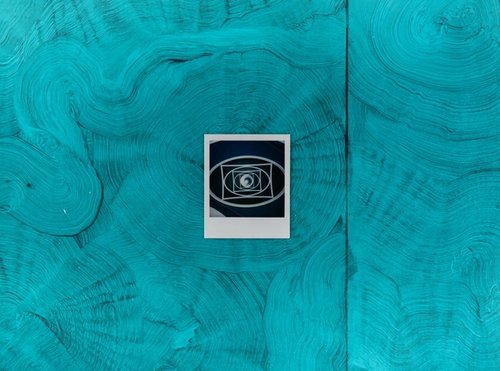William Stok
Cultural History Frieze at The Cosmic House
2022
I met Charles Jencks for the first time when I had a show at Arnolfini Arts in Bristol, filling two floors of the gallery with very closely spaced four-metre-tall vertical paintings, showing mainly one figure in each work. I painted the “mural” on canvas around the four walls of the entrance hall of the “Thematic House” in the same way as at Arnolfini, putting the distinguished figures, chosen by Charles to represent the history of humanity, very close together at a banquet despite their different historical periods and places of origin. Imhotep for example, who was working in ancient Egypt, is next to Pythagoras who lived in Greece centuries later.
When I went to see the critic Jencks for the first time, I didn’t know that he was an artist, designing his own house. In fact when he asked me to sit down in his toilet to look up at the ceiling and the enclosing walls where postcards of works of art in frames were positioned close together (as my work was at Arnolfini) I didn’t get it. I thought I was dealing with an eccentric. An impression that became stronger when, to explain how he wanted the galaxies to be painted, he asked me to climb under a low table with him (and Charles was a tall man) to show me the similarity in shape of the wood knots and the galaxies. I felt I was in a James Bond film when he pressed a button to close a large window or pressed another one which brought a white television out from a flat white table.
When I knew Charles better, I understood that in fact I was in front of a very motivated man who wanted me to illustrate precisely the script that he had written for me (supported by a pile of books he left for me to read). I admired Charles very much, but my need to work in my own way led to long discussions over five months that stalled my creativity, until he went to America for a month and I took the decision to work in the solitude of my studio.
I accepted the chosen personages, but I altered Charles’ idea of the universe, dividing the mural into three parts following the structure of celestial harmony of the 6th century Eastern Roman monk Dionysius Exiguus: a reddish frieze, the sky, and the figures.
Most of the figures in the mural were based on the likenesses of my friends and family. Even for Hannah Arendt, where I could have copied a photograph, I portrayed instead my grandmother. Next to Borromini I drew St Ivo alla Sapienza, the church where I was married. The emperor Hadrien holds the Pantheon that was built during his reign, which my wife visits every time she goes to Rome.
Because of the difficulty I had with the mural before Charles went to America he asked me to complete only a small section, but when he returned he had a surprise: I had finished the whole painting and he was happy with it.
